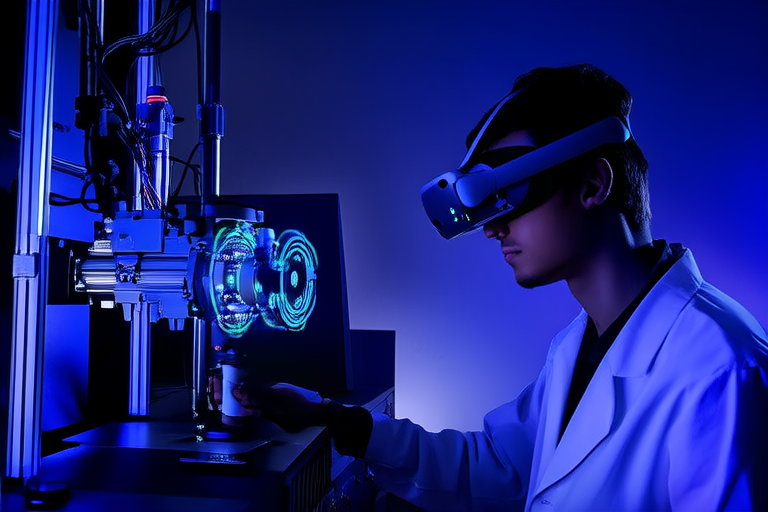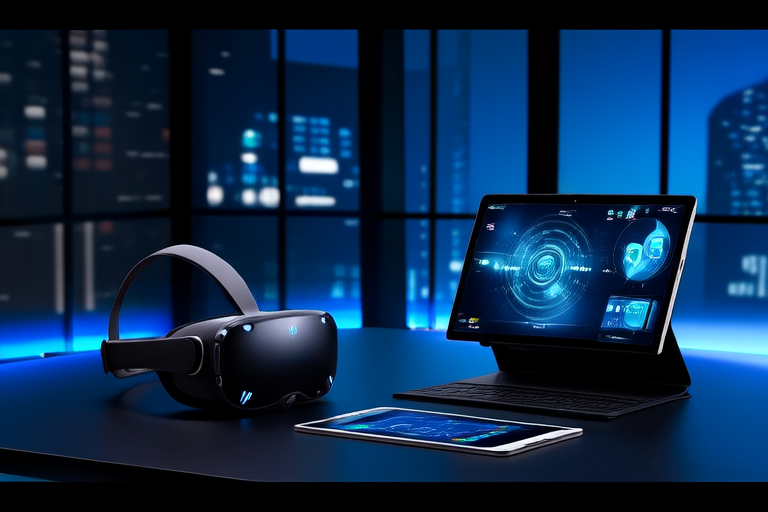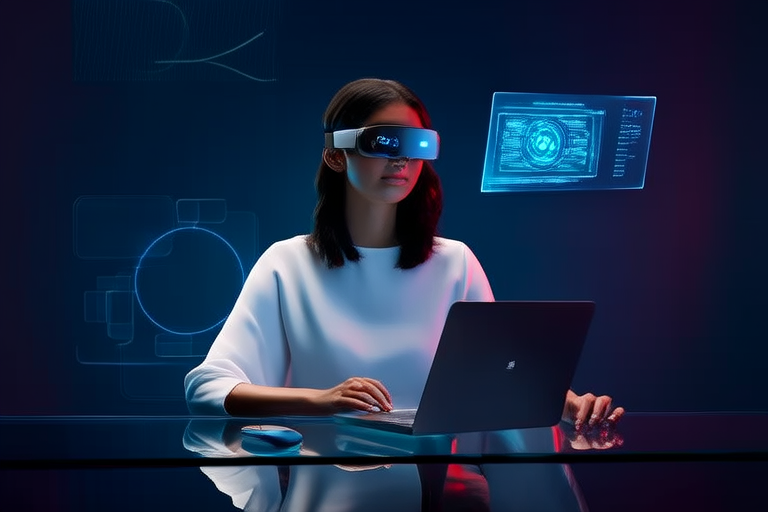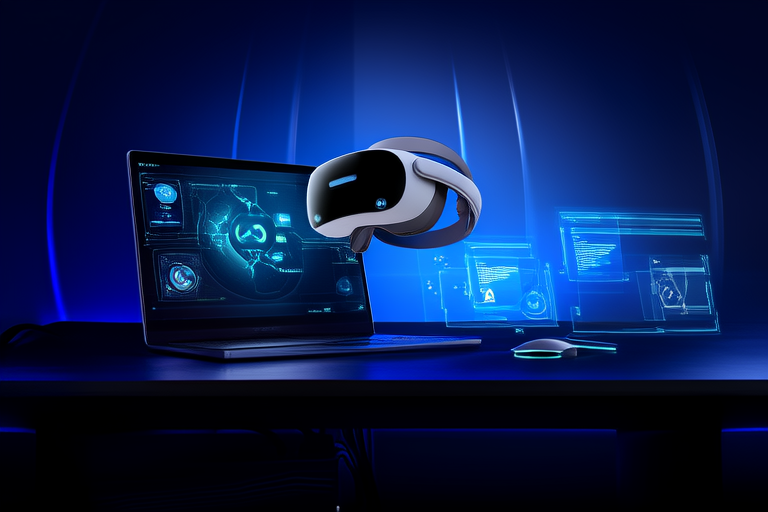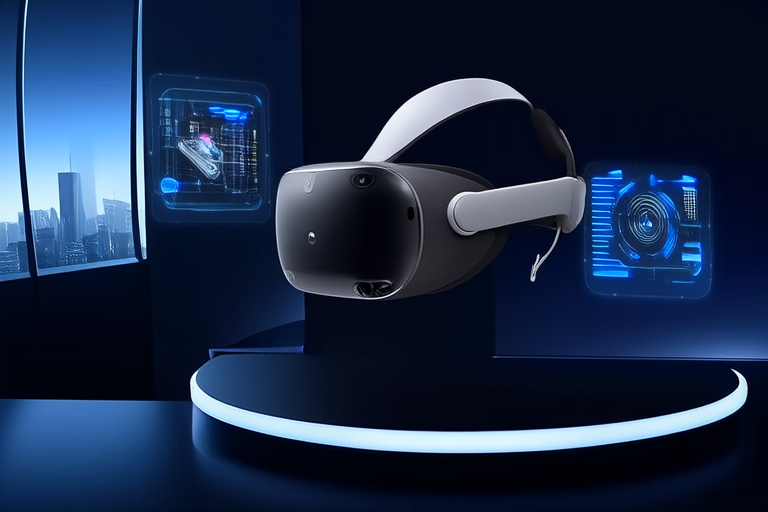The Future of Immersion: How VR and AR Are Redefining Reality
Introduction: Defining Virtual Reality and Augmented Reality
In recent years, virtual reality (VR) and augmented reality (AR) have emerged as transformative technologies with the potential to redefine how humans interact with the world. While often discussed together, these two concepts serve distinct purposes. Virtual reality immerses users in entirely digital environments, effectively transporting them to simulated worlds that can be explored and interacted with through specialized hardware such as headsets and controllers. In contrast, augmented reality overlays digital elements onto the real world, enhancing physical spaces with interactive, contextually relevant information via devices like smartphones, tablets, or AR glasses.
Both VR and AR are rooted in the broader concept of immersive computing, which seeks to blur the boundaries between the physical and digital realms. These technologies leverage advancements in computer graphics, sensors, and artificial intelligence to create experiences that feel increasingly lifelike and intuitive. As they continue to evolve, VR and AR are not only reshaping entertainment but also revolutionizing industries ranging from education to healthcare, offering new ways for individuals and organizations to engage with information, environments, and one another.
Current Applications Across Industries
The versatility of VR and AR has led to their adoption across a wide array of sectors, each benefiting from the unique capabilities these technologies provide.
Gaming and Entertainment
The gaming industry has been at the forefront of VR adoption, leveraging its ability to create deeply immersive experiences. By placing players directly within the game world, VR enhances engagement and emotional connection, offering levels of interactivity that traditional gaming cannot match. Meanwhile, AR has found success in mobile gaming, where it enables users to interact with virtual objects superimposed on real-world settings, fostering a sense of wonder and discovery.
Education and Training
In education, VR and AR are transforming learning by providing experiential opportunities that were previously inaccessible. For instance, VR allows students to explore historical landmarks, simulate scientific experiments, or even travel through the human body, making abstract concepts tangible. Similarly, AR is being used to overlay instructional content onto physical objects, aiding in hands-on training for fields such as engineering, medicine, and aviation. These technologies are particularly valuable for high-risk professions, where realistic simulations can prepare individuals for real-world scenarios without the associated dangers.
Healthcare
Healthcare stands to benefit immensely from VR and AR innovations. Surgeons are using AR to visualize patient anatomy during procedures, improving precision and reducing risks. VR is being employed for pain management, mental health therapy, and rehabilitation, offering patients immersive distractions or guided exercises tailored to their needs. Additionally, medical training programs are incorporating VR simulations to teach complex procedures, ensuring practitioners gain confidence and competence before working with actual patients.
Retail and E-Commerce
Retailers are adopting AR to enhance the shopping experience by allowing customers to virtually try on clothing, accessories, or makeup before making a purchase. This not only increases consumer satisfaction but also reduces return rates. Meanwhile, VR is being used to create virtual storefronts, enabling shoppers to browse products in an immersive environment from the comfort of their homes. These applications are particularly relevant in an era where e-commerce continues to grow, offering businesses innovative ways to engage with tech-savvy consumers.
Technological Advancements Driving Evolution
The rapid progress of VR and AR is underpinned by several key technological advancements. Improved display resolutions and refresh rates have significantly enhanced visual fidelity, reducing motion sickness and creating more convincing illusions of reality. Advances in haptic feedback systems now allow users to “feel” virtual objects, adding another layer of immersion. Eye-tracking technology is enabling more natural interactions by letting users navigate interfaces simply by looking at specific points.
On the software side, developments in artificial intelligence and machine learning are making VR and AR experiences smarter and more responsive. AI-driven algorithms can adapt content in real time based on user behavior, ensuring personalized and dynamic interactions. Cloud computing has further expanded possibilities by enabling resource-intensive applications to run smoothly on lightweight devices, democratizing access to high-quality immersive experiences.
Additionally, the proliferation of 5G networks is poised to accelerate the growth of VR and AR by facilitating faster data transfer and lower latency. This will enable seamless streaming of high-definition content and support collaborative multi-user experiences, unlocking new use cases across industries.
Challenges to Widespread Adoption
Despite their promise, VR and AR face significant hurdles that must be addressed before achieving mainstream adoption. One major challenge is cost; high-quality hardware remains prohibitively expensive for many consumers and businesses, limiting accessibility. Furthermore, the complexity of setting up and maintaining these systems can deter non-technical users, creating barriers to entry.
Another issue is the lack of standardized platforms and interoperability. Fragmentation across devices and ecosystems makes it difficult for developers to create universally compatible applications, hindering innovation and scalability. Content availability also remains a concern, as the library of compelling VR and AR experiences is still relatively limited compared to traditional media.
Privacy and ethical considerations present additional challenges. Both technologies rely heavily on collecting and processing vast amounts of personal data, raising concerns about surveillance, misuse, and security breaches. Ensuring transparency and implementing robust safeguards will be critical to building public trust and encouraging wider adoption.
A Forward-Looking Conclusion: Reshaping Our Perception of Reality
As VR and AR continue to mature, their potential to reshape our perception of reality becomes increasingly evident. These technologies hold the power to transcend geographical, temporal, and even sensory limitations, offering unprecedented opportunities for exploration, learning, and connection. Imagine a future where remote work feels as immersive as being physically present, where cultural heritage sites are preserved and accessible to all through virtual tours, or where medical treatments are customized and optimized through precise AR guidance.
However, realizing this vision will require concerted efforts from technologists, policymakers, educators, and society at large. Addressing affordability, usability, and ethical concerns will be essential to ensure equitable access and responsible deployment. Moreover, fostering collaboration between stakeholders will help establish standards and best practices that promote sustainable growth.
In conclusion, VR and AR represent more than just incremental improvements to existing technologies—they embody a paradigm shift in how we perceive and interact with the world around us. By bridging the gap between imagination and reality, they offer a glimpse into a future where the boundaries between the physical and digital dissolve, empowering humanity to achieve new heights of creativity, understanding, and empathy.
